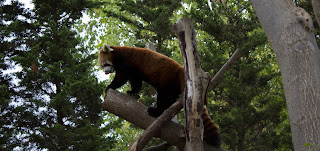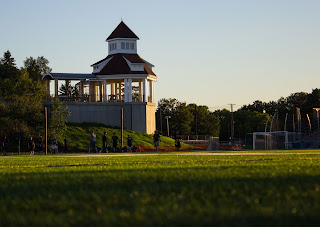Harmony, not in nature.
This is a photo of the rehearsal of a Christmas cabaret that is being put on at Theatre on Main in Oconomowoc. What better represents harmony both metaphorically (in multiple people working together on a show), and literally (They are singing). This is stage lighting that they were using for the rehearsal, and they were told I was coming, so they did dress up a bit more than they would have otherwise, as these pictures were also used for marketing for the show.
Models: Matt Zembrowski, Lori Nappe, Michael Skocir
"Bowing to the Sun God"
Metaphor
I had this idea in my head, which obviously wouldn't have worked with the trees bare as they are now, so I went back into some pictures I took previously for this class, but not used, and edited and cropped this to represent what I imagined. I like this image and meaning in multiple aspects; first, I think it physically looks like the trees are bowing to the sun, with the leaves representing hair. Second, trees and plants are known to physically move or grow toward a light source, because, of course, the light is life giving to a tree. Lastly, it is reminiscent of some of the earliest human religions; many of which worshiped the sun.
"Monkey Business"
Metaphor
I think the meaning of this one is pretty obvious, but it did take a while to set up; there were quite a few safety pins holding monkey hands in correct places and attaching objects to them. However, I kept the pedestals I used to hold up the monkeys in the frame to represent the monkeys being sort of puppets, of course, referring to the business world. I placed the scene next to a window late in the afternoon so the light would shine directly on the monkeys.
"Internet Dating"
Metaphor
This photo was taken at People's Park Restaurant in Downtown Waukesha, and the only props used were the masks, and anything we still had on the table after having drinks. The lighting was conveniently red-tinted by the Christmas lights on the ceiling.
Models: Nicole Marie Olson and John Reilly
"The Dangers of Caffeine"
Metaphor
This was taken near a window in the late afternoon for lighting, but about 4 feet away from the window for more indirect lighting, as the ones I took directly in the window all overexposed the t-rex, and reduced the visible details.












































